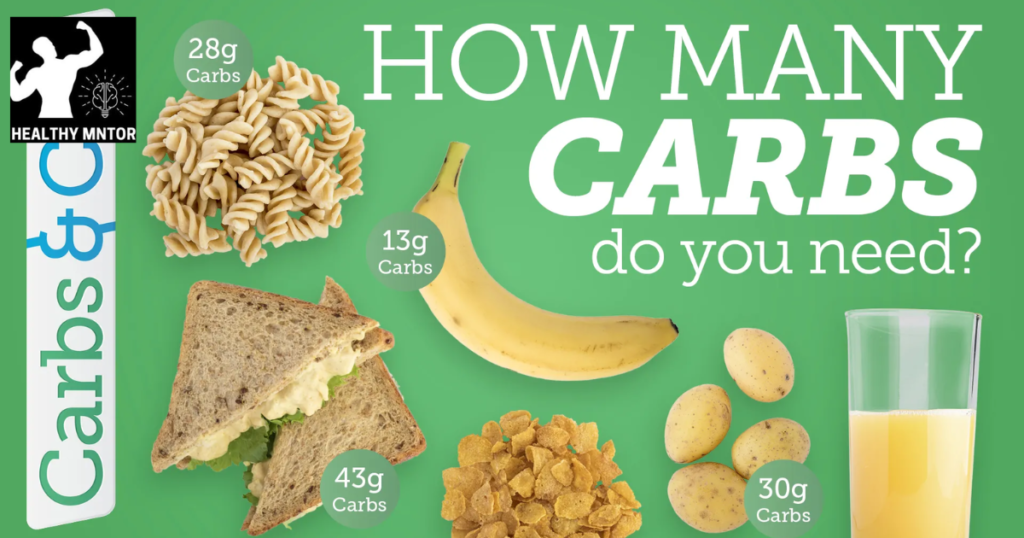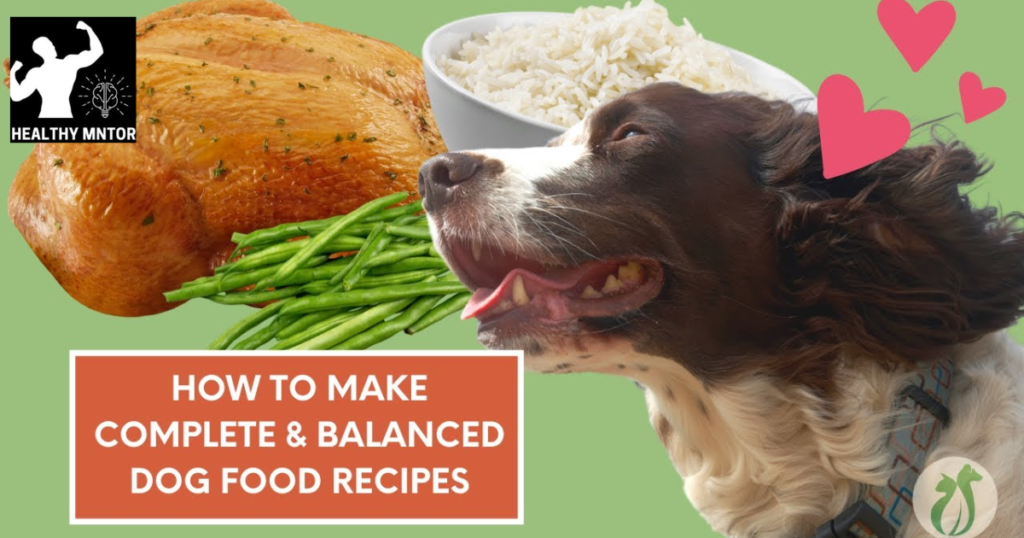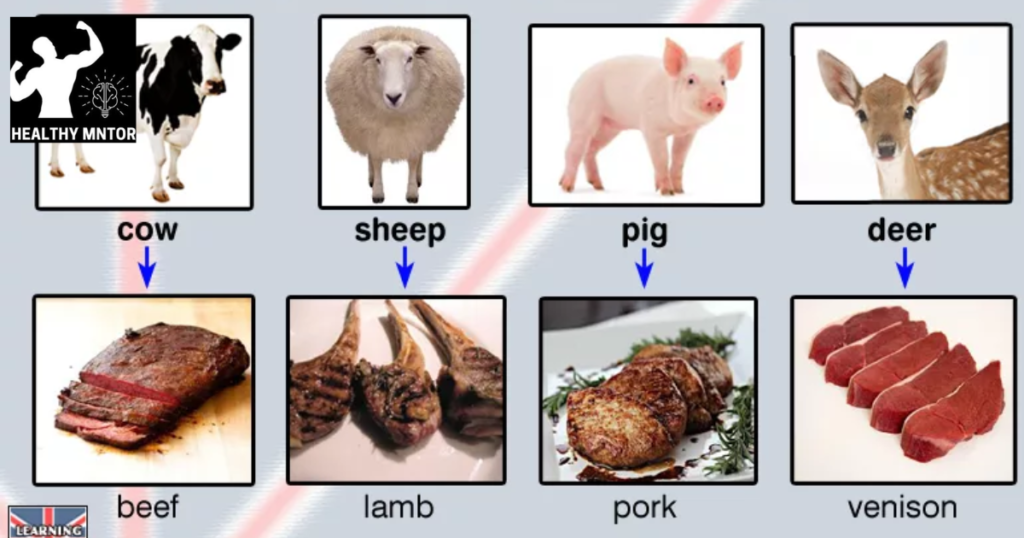Have you ever wondered what’s really in your furry friend’s kibble? Dog food ingredients can be a confusing and sometimes concerning topic for pet owners. From animal derivatives to chemical-sounding additives, the list of components can seem overwhelming. But fear not, we’re here to break it down for you and help you understand exactly what your pup is munching on.
The Most Common Dog Food Ingredients
Let’s start with the basics. Most commercial dog foods contain a combination of the following ingredients:
Animal Derivatives:
Proteins sourced from animals, such as chicken, beef, lamb, or fish. These provide essential amino acids for muscle development and maintenance.
Dairy Products and Eggs:
Sources of high-quality protein, as well as essential fatty acids and minerals.
Vegetables:
Carrots, peas, potatoes, and other veggies offer fiber, vitamins, and minerals.
Cereals and Cereal By-products:
Grains like wheat, corn, and rice provide carbohydrates for energy.
Fats and Oils:
From animal and vegetable sources, these contribute to a shiny coat and healthy skin.
Vitamin and Mineral Supplements:
Ensure your pup gets all the necessary nutrients for optimal health.
Sodium and Chloride:
These electrolytes help maintain fluid balance and support proper bodily functions.
Various Sugars:
Small amounts of sugars like sucrose or fructose can enhance palatability and flavor.
Additives:
Preservatives, antioxidants, and other functional ingredients help maintain the food’s quality and stability.
What Are Byproducts, and Should I Avoid Dog Foods That Contain Them?

One ingredient that often raises eyebrows is “byproducts.” These are parts of slaughtered animals that are considered edible but not typically consumed by humans, such as organs, bones, and blood.
While the term “byproducts” may sound unappealing, these ingredients can actually provide valuable nutrients for your dog. They’re rich in protein, vitamins, and minerals that support your pup’s overall health.
However, it’s important to note that not all byproducts are created equal. Look for high-quality sources listed as “meat byproducts” or “poultry byproducts” rather than generic “animal byproducts.
What Are All Those Chemical-Sounding Names Lower on the Ingredient List?
As you scan the ingredient list, you may come across some unfamiliar, chemical-sounding names like “butylated hydroxyanisole” or “propylene glycol.” Don’t panic! Many of these are actually common food additives that serve specific purposes in dog food formulations.
For example:
Antioxidants like BHA or BHT help preserve the food and prevent fats from going rancid.
Emulsifiers like lecithin help bind fat and water together, improving texture and consistency.
Preservatives like potassium sorbate or citric acid help extend the food’s shelf life.
While these ingredients may sound intimidating, they’re typically safe and approved for use in pet food when used within the appropriate limits.
What Is Organic Pet Food?
With the growing popularity of organic and natural foods for humans, it’s no surprise that organic pet food options have emerged as well. But what exactly does “organic” mean in the context of dog food?
In general, organic dog foods are made with ingredients that have been grown or raised without the use of synthetic pesticides, fertilizers, growth hormones, or antibiotics. They may also be free from genetically modified organisms (GMOs) and artificial preservatives or additives.
While organic dog foods can be more expensive, some pet owners prefer them due to the perceived health benefits and environmental considerations.
However, it’s important to note that the term “organic” is regulated by the United States Department of Agriculture (USDA) and has specific requirements for labeling. Look for the USDA Organic seal or “made with organic ingredients” claims on the packaging.
How Can I Make Sure the Food Meets My Dog’s Needs?
With so many options on the market, choosing the right dog food can be overwhelming. But there are a few key things to look for to ensure you’re providing your pup with a balanced and nutritious diet:
Check for an AAFCO Statement: The Association of American Feed Control Officials (AAFCO) sets standards for pet food labeling and nutrient requirements. Look for the “complete and balanced” statement on the label, indicating that the food meets these standards.
Consider Your Dog’s Life Stage: Puppies, adults, and senior dogs have different nutritional needs. Choose a formula tailored to your dog’s age and activity level.
Consult Your Veterinarian: Your vet is the best resource for recommendations based on your dog’s specific breed, size, and health concerns.
Read the Guaranteed Analysis: This breakdown of key nutrients like protein, fat, fiber, and moisture content can help you compare different formulas and find the best fit for your furry friend.
What Is the Guaranteed Analysis?
Speaking of the guaranteed analysis, let’s take a closer look at what it means. This section on the pet food label provides a breakdown of the minimum percentages of crude protein and crude fat, as well as the maximum percentages of crude fiber and moisture.
For example, a typical dry dog food might have a guaranteed analysis like this:
| Nutrient | Percentage |
| Crude Protein (min) | 22% |
| Crude Fat (min) | 12% |
| Crude Fiber (max) | 4% |
| Moisture (max) | 10% |
These values give you an idea of the nutrient density of the food and can help you compare different products. However, it’s important to note that the guaranteed analysis doesn’t provide information on the quality or digestibility of the ingredients.
What Do “Natural” and “Holistic” Labels Mean?

As you browse the pet food aisles, you may also come across terms like “natural” or “holistic” on the packaging. But what do these buzzwords really mean?
Unfortunately, there’s no legal definition or regulation for the term “natural” when it comes to pet food. Generally, it implies that the food doesn’t contain artificial colors, flavors, or preservatives. However, the ingredients themselves may still be highly processed or refined.
Similarly, “holistic” is a marketing term that suggests the food is made from wholesome, natural ingredients and is designed to support overall health and well-being. However, there are no specific standards or requirements for using this label.
While these terms can be appealing, it’s important to evaluate the actual ingredient list and nutritional information rather than relying solely on marketing claims.
Remember, the key to a balanced and nutritious diet for your furry friend lies in understanding the ingredients and choosing a high-quality, reputable brand that meets your pup’s specific needs.
provide the rest of the outline.
Sure, here’s the remaining section of the comprehensive blog post, continuing from the previous content:
Dog Nutrition: Guide to Dog Food Nutrients
Now that we’ve covered the common ingredients found in dog food, let’s dive deeper into the specific nutrients your canine companion needs for optimal health and well-being.
What Goes Into a Nutritional, Balanced Dog Food?
A nutritionally complete and balanced dog food should provide the right amounts of six essential nutrient groups:
- Protein
- Fats
- Carbohydrates
- Vitamins
- Minerals
- Water
Complete and Balanced Dog Food Should Follow AAFCO Guidelines
The Association of American Feed Control Officials (AAFCO) sets standards and guidelines for the labeling and nutritional adequacy of pet foods. A “complete and balanced” dog food must meet the following AAFCO requirements:
AAFCO Label Requirements
The product must be clearly labeled as either “dog food” or “dog treat.”
The label must include a guaranteed analysis listing the minimum percentages of protein and fat, and the maximum percentages of fiber and moisture.
An AAFCO nutritional adequacy statement must be present, indicating that the food is formulated to meet the nutritional needs of dogs at specific life stages (e.g., growth, adult maintenance, or all life stages).
AAFCO Nutrient Requirements

- AAFCO has established minimum and maximum levels for various nutrients, including:
- Proteins: Minimum levels based on the dog’s life stage and the protein’s quality.
- Fats: Minimum and maximum levels for total fat and specific essential fatty acids like linoleic acid.
- Carbohydrates: No specific requirements, but they should provide adequate energy and fiber.
- Vitamins and Minerals: Minimum and maximum levels for essential vitamins (A, D, E, B-complex, etc.) and minerals (calcium, phosphorus, sodium, zinc, etc.).
Balanced Dog Food Should Meet Your Dog’s Energy Requirements
In addition to providing the right nutrients, a balanced dog food should also supply the appropriate amount of calories to meet your dog’s energy needs. This depends on factors such as:
Age and Life Stage: Puppies and active adult dogs typically require more calories per pound of body weight than sedentary or senior dogs.
Breed and Size: Smaller breeds generally have higher metabolic rates and require more calories per pound than larger breeds.
Activity Level: More active or working dogs burn more calories and require higher caloric intake.
Health Conditions: Certain medical conditions like diabetes or obesity may require specific caloric adjustments.
Your veterinarian can help you determine the appropriate calorie intake for your dog based on these factors.
Protein in Dog Food
Protein is essential for building and maintaining your dog’s muscles, organs, enzymes, and other body tissues. It’s also crucial for healthy skin, coat, and immune function.
Sources of Protein in Dog Food
Common protein sources in commercial dog foods include:
Animal-Based: Chicken, beef, lamb, fish, and meat or poultry byproducts.
Plant-Based: Soybean meal, corn gluten meal, and other plant proteins (often used as supplementary sources).
What Does Crude Protein Mean?
The “crude protein” value listed on the guaranteed analysis represents the total amount of protein in the food, including both digestible and indigestible portions. However, it doesn’t reflect the quality or digestibility of the protein sources.
Protein Quality
Not all proteins are equal in terms of their nutritional value. High-quality protein sources contain an optimal balance of essential amino acids that dogs require from their diet. Animal-based proteins are generally considered higher quality than plant-based sources.
How Much Protein Does My Dog Need?
The AAFCO recommends a minimum of 22% crude protein for adult dogs and 18% for puppies on a dry matter basis. However, individual protein requirements can vary based on factors like breed, size, activity level, and life stage.
Low-Protein Diets
In some cases, dogs with certain medical conditions (e.g., kidney disease) may require low-protein diets prescribed by a veterinarian. These diets aim to reduce the workload on the kidneys and minimize waste product buildup.
Can Dogs Be Allergic to Certain Proteins?
Yes, some dogs can develop allergies or intolerances to specific protein sources, such as beef, chicken, or dairy products. In these cases, a veterinarian may recommend a limited-ingredient or novel protein diet to identify and eliminate the offending ingredient.
Fat in Dog Food
Fats are an essential source of energy and fatty acids for dogs. They also play a crucial role in nutrient absorption, hormone production, and maintaining healthy skin and coat.
Sources of Fat in Dog Food
Common fat sources in commercial dog foods include:
Animal Fats: Chicken fat, beef tallow, and fish oils.
Vegetable Oils: Canola, sunflower, and soybean oils.
While both animal and plant-based fats provide energy, animal fats are generally richer in essential fatty acids like omega-3 and omega-6, which are important for overall health and well-being.
Carbohydrates in Dog Food
Carbohydrates are the primary source of energy for dogs, and they also provide fiber for digestive health.
Fiber From Carbohydrates
Fiber is an important component of carbohydrates that supports digestive function and gut health. There are two main types of fiber:
Soluble Fiber
- Helps regulate blood sugar levels and cholesterol
- Sources: Fruits, vegetables, and some grains
Insoluble Fiber
- Promotes regular bowel movements and prevents constipation
- Sources: Whole grains, bran, and vegetable skins
Sources of Carbohydrates
Grains: Wheat, corn, rice, and oats.
Vegetables: Potatoes, peas, and other starchy veggies.
Fruits: Some dog foods may include small amounts of fruit for added fiber and nutrients.
How Many Carbs Does My Dog Need?

There is no specific carbohydrate requirement for dogs, as they can obtain energy from both fats and proteins. However, carbohydrates should make up a significant portion of a balanced diet to provide energy and fiber.
Vitamins in Dog Food
Vitamins are essential organic compounds that play crucial roles in various bodily functions, including growth, metabolism, and immune system support.
Which Vitamins Do Dogs Need?
Dogs require a balanced intake of both fat-soluble and water-soluble vitamins:
Fat-Soluble Vitamins
- Vitamin A: Supports vision, immune function, and skin health.
- Vitamin D: Aids in calcium and phosphorus absorption for strong bones.
- Vitamin E: Acts as an antioxidant and supports healthy skin and muscles.
- Vitamin K: Plays a role in blood clotting and bone metabolism.
Water-Soluble Vitamins
Thiamin (B1): Supports energy metabolism and nerve function.
Riboflavin (B2): Aids in growth, red blood cell production, and energy metabolism.
Pyridoxine (B6): Involved in protein metabolism and immune function.
Niacin (B3): Supports digestive health and skin integrity.
Pantothenic Acid (B5): Helps metabolize fats and carbohydrates for energy.
Cobalamin (B12): Essential for red blood cell formation and nerve function.
Folic Acid (B9): Necessary for cell growth and DNA synthesis.
Biotin (B7 or H): Supports healthy skin, coat, and metabolism.
Choline: Aids in fat metabolism and liver function.
Do Dogs Need Vitamin Supplements?
Most high-quality commercial dog foods are formulated to provide a balanced array of essential vitamins. However, some dogs may benefit from vitamin supplements in certain situations, such as:
- Specific health conditions or deficiencies
- Increased nutritional needs during growth, pregnancy, or lactation
- Poor appetite or malabsorption issues
Always consult with your veterinarian before giving your dog any vitamin supplements, as excessive levels of certain vitamins can be harmful.
Minerals in Dog Food
Minerals are inorganic compounds that serve various functions in a dog’s body, including bone development, fluid balance, and enzyme activation.
Which Minerals Do Dogs Need?
Dogs require both macro-minerals and trace minerals in their diet:
Macro-Minerals
Calcium (Ca): Essential for strong bones and teeth, muscle function, and blood clotting.
Phosphorus (P): Works with calcium for bone development and energy metabolism.
Magnesium (Mg): Supports healthy bones, muscles, and nerve function.
Potassium (K): Plays a role in fluid balance, muscle contractions, and nerve impulse transmission.
Sodium (Na) and Chloride (Cl): These electrolytes are crucial for fluid balance and acid-base regulation.
Trace Minerals
- Iron (Fe): Required for red blood cell production and oxygen transport.
- Copper (Cu): Supports iron metabolism, connective tissue formation, and immune function.
- Zinc (Zn): Important for skin and coat health, wound healing, and immune system function.
- Manganese (Mn): Aids in bone development, reproduction, and metabolism.
- Selenium (Se): Acts as an antioxidant and supports thyroid function.
- Iodine (I): Necessary for proper thyroid hormone production and metabolism.
Water Requirements for Dogs
Water is often overlooked as an essential nutrient, but it’s vital for nearly all bodily functions, including temperature regulation, waste elimination, and nutrient transport.
The amount of water a dog needs can vary based on factors like age, activity level, health status, and environmental conditions. As a general guideline, dogs should have access to fresh, clean water at all times and consume approximately 1 ounce of water per pound of body weight per day.
Can I Make My Own Balanced Dog Food?

While it’s possible to prepare homemade dog food, it requires careful planning and consultation with a veterinary nutritionist to ensure that your pet’s dietary needs are met. Improper homemade diets can lead to nutritional deficiencies or imbalances, which can be detrimental to your dog’s health.
If you’re interested in making your own dog food, it’s recommended to work closely with a qualified veterinary nutritionist who can provide a balanced recipe tailored to your dog’s specific needs.
Essential Dog Food Ingredients for Healthy Dogs
To ensure your furry companion receives a well-rounded, nutritious diet, look for dog foods that contain the following essential ingredients
High-Quality Animal Proteins: Lean meats, poultry, fish, and eggs provide necessary amino acids for muscle development and maintenance.
Whole Grains: Oats, brown rice, and whole wheat offer complex carbohydrates, fiber, and essential nutrients like B vitamins and minerals.
Healthy Fats: Sources like fish oil, flaxseed oil, and certain animal fats provide omega-3 and omega-6 fatty acids for skin, coat, and overall health.
Fruits and Vegetables: These nutrient-dense ingredients supply essential vitamins, minerals, and antioxidants for optimal bodily function.
Probiotics and Prebiotics: These beneficial gut bacteria and fibers promote digestive health and immune support.
No Artificial Colors, Flavors, or Preservatives: Look for natural alternatives or minimal use of these additives.
Remember, every dog is unique, and their dietary needs may vary based on factors like age, breed, activity level, and overall health. Consult with your veterinarian to determine the best diet for your beloved canine companion.
I hope this comprehensive guide has provided you with valuable insights into the world of dog food ingredients and nutrition. Always prioritize your pup’s well-being by choosing high-quality, balanced diets and consulting with professionals when needed.
Here are some additional sections that could be included in the comprehensive blog post on dog food ingredients and nutrition:
One Size Does Not Fit All
Just as humans have varying dietary needs based on their age, activity level, and health status, the same is true for our canine companions. A one-size-fits-all approach to dog food may not be suitable for every pup.
When selecting a dog food, consider your dog’s specific requirements:
Breed Size Smaller breeds tend to have higher metabolic rates and may require more calories per pound of body weight compared to larger breeds. Additionally, giant breeds like Great Danes may benefit from specialized diets designed to support their unique nutritional needs.
Life Stage Puppies, adult dogs, and senior dogs have different nutritional requirements. Puppy formulas are typically higher in calories, protein, and minerals to support rapid growth, while senior diets may be lower in calories and restricted in certain nutrients to accommodate a slower metabolism.
Activity Level Highly active or working dogs expend more energy and may require higher calorie and nutrient-dense foods compared to sedentary or less active pets.
Health Conditions Dogs with specific health issues, such as allergies, kidney disease, or diabetes, may require specialized diets prescribed by a veterinarian to manage their condition and meet their unique nutritional needs.
By considering your dog’s individual characteristics, you can better select a dog food that provides the right balance of nutrients to support their overall health and well-being.
How to Store Your Dog Food
Proper storage is essential to maintain the quality and freshness of your dog’s food. Follow these tips to ensure your pup’s meals stay in top condition:
Keep it Cool and Dry: Store dry dog food in a cool, dry place away from direct sunlight and moisture. Heat and humidity can cause the fats in the food to become rancid and spoil more quickly.
Use Air-Tight Containers: Transfer dry food from its original bag to an airtight container or resealable bag to keep it fresh and prevent moisture and pests from getting in.
Refrigerate or Freeze: For wet or fresh dog foods, follow the manufacturer’s instructions for refrigeration or freezing to maintain freshness and prevent bacterial growth.
Check Expiration Dates: Always check the “best by” or expiration date on the packaging and discard any food that has passed its recommended shelf life.
Maintain Cleanliness: Keep storage containers clean and free from any residue or moisture that could contaminate the food.
By following proper storage guidelines, you can help ensure your dog’s food remains safe, nutritious, and appealing for them to enjoy.
What Kind of “Meat” Is In Your Pet’s Food?

When it comes to the protein sources in your dog’s food, it’s essential to understand the different terminology used on labels:
Meat: This refers to the clean flesh derived from slaughtered mammals like cattle, pigs, sheep, or goats. It should contain little to no bone, blood, hair, hoof, horn, hide trimmings, or other byproducts.
Meat Meal: A rendered product made from the dried, ground tissues of mammalian animals. It may include bone, but no added hair, hoof, horn, hide trimmings, or other non-rendered byproducts.
Poultry: The clean flesh of slaughtered chickens, turkeys, ducks, or geese. It should contain little to no bone, skin, or other byproducts.
Poultry Meal: A rendered product made from the dried, ground tissues of poultry. It may include bone but no added feathers, heads, feet, or other non-rendered byproducts.
Fish: The clean flesh of fish, with or without bones, but no added heads, scales, viscera, or other byproducts.
Animal Byproducts: Non-rendered, clean parts of slaughtered animals other than meat, such as bones, blood, feathers, or organs.
Understanding these terms can help you make informed decisions about the protein sources in your dog’s diet and ensure they’re getting high-quality, wholesome ingredients.
Dog Food Labelling: Decoding the Lingo
Navigating the world of dog food labels can be a challenge, with various terms and claims used by manufacturers. Here’s a breakdown of some common labeling terms and what they actually mean:
Natural: This term is not regulated by any governing body and can be used liberally by manufacturers. It generally implies that the food contains no artificial colors, flavors, or preservatives, but the ingredients themselves may still be highly processed.
Holistic: Another marketing term that suggests the food is made from wholesome, natural ingredients and is designed to support overall health and well-being. However, there are no specific standards or requirements for using this label.
Human-Grade: This claim indicates that the ingredients used in the food are edible and have been approved for human consumption. However, the final product itself may not be suitable for human consumption due to processing methods or other factors.
Organic: For a pet food to be labeled as “organic,” it must meet strict standards set by the USDA, including being made from ingredients that have been grown or raised without the use of synthetic pesticides, fertilizers, growth hormones, or antibiotics.
Limited Ingredient: These diets contain a limited number of protein and carbohydrate sources, making them ideal for dogs with food sensitivities or allergies.
Grain-Free: As the name suggests, these foods do not contain any grains or cereal ingredients, and instead rely on alternative sources like potatoes, lentils, or peas for carbohydrates.
While these labels can provide useful information, it’s essential to read and understand the full ingredient list and nutritional information to make an informed decision about the best food for your furry companion.
Feeding Dogs with Health Problems
Just as some human health conditions require dietary modifications, certain medical issues in dogs may necessitate specialized diets. Here are some examples:
Digestive Problems Dogs with digestive issues like inflammatory bowel disease (IBD), pancreatitis, or food allergies may benefit from highly digestible, low-fat, and limited-ingredient diets to reduce gastrointestinal strain and minimize inflammation.
Kidney Disease Renal diets are formulated to be low in protein, phosphorus, and sodium to reduce the workload on the kidneys and minimize waste product buildup.
Diabetes Diabetic dogs often require diets that are low in simple carbohydrates and high in fiber to help regulate blood sugar levels.
Obesity Weight management diets are designed to be lower in calories and higher in fiber to promote a healthy weight loss while still providing essential nutrients.
Joint Problems Foods containing glucosamine, chondroitin, and omega-3 fatty acids can help support joint health and mobility in dogs with conditions like arthritis or hip dysplasia.
Your veterinarian can recommend the most appropriate diet for your dog’s specific health condition and provide guidance on dietary adjustments and portion control.
Remember, while specialized diets can be beneficial, it’s essential to consult with a veterinary professional before making any significant changes to your dog’s diet, as improper dietary modifications can potentially exacerbate existing health issues or create new ones.
By understanding your dog’s unique nutritional needs and working closely with your veterinarian, you can ensure your furry friend receives the best possible care through a well-balanced, tailored diet.
Certainly, here are some additional sections that can be included in the comprehensive blog post on dog food ingredients and nutrition:
The Role of Fiber in Dog Nutrition

Fiber is an often overlooked but essential component of a dog’s diet. It plays a crucial role in maintaining a healthy digestive system and can provide various health benefits. There are two main types of fiber:
Soluble Fiber Soluble fiber dissolves in water and forms a gel-like substance in the digestive tract. This type of fiber can help
- Regulate blood sugar levels by slowing down the absorption of glucose
- Lower cholesterol levels by binding to cholesterol molecules and promoting their excretion
- Support a healthy gut microbiome by acting as a prebiotic, providing food for beneficial bacteria
Good sources of soluble fiber in dog food include fruits, vegetables, oats, and certain types of seaweed.
Insoluble Fiber Insoluble fiber does not dissolve in water and passes through the digestive system relatively intact. Its primary function is to:
- Promote regular bowel movements and prevent constipation by adding bulk to the stool
- Aid in the removal of waste and toxins from the body
- Support a healthy gut by providing roughage for proper intestinal muscle contractions
Whole grains, bran, and the skins of fruits and vegetables are excellent sources of insoluble fiber for dogs.
Both types of fiber are essential for maintaining overall gut health and preventing issues like constipation, diarrhea, and diabetes. However, it’s important to note that dogs have different fiber requirements than humans, and excessive fiber can cause digestive problems. Always consult with your veterinarian to ensure your dog is receiving an appropriate amount of fiber in their diet.
Tailoring Nutrition to Your Dog’s Breed
While general nutritional guidelines exist for dogs, certain breeds may have unique dietary requirements based on their size, energy levels, and other factors. Here are some examples:
Toy and Small Breeds
Smaller breeds like Chihuahuas, Yorkies, and Maltese have higher metabolic rates and caloric needs per pound of body weight compared to larger dogs. They may also benefit from diets with higher protein and fat levels to support their high energy demands.
Large and Giant Breeds
Breeds like Great Danes, St. Bernards, and Mastiffs require careful nutritional management to support their rapid growth and prevent developmental issues like hip and elbow dysplasia. Large breed puppy formulas typically contain lower levels of calcium and phosphorus to promote controlled growth and reduce the risk of skeletal problems.
Active and Working Breeds
Energetic breeds like Border Collies, Australian Shepherds, and Labrador Retrievers may require higher calorie and nutrient-dense diets to fuel their increased activity levels and metabolic demands.
Brachycephalic Breeds
Breeds with shortened snouts, such as Pugs, Bulldogs, and Boston Terriers, may benefit from diets formulated with smaller kibble sizes or canned options to accommodate their unique facial structures and prevent choking or breathing difficulties during eating.
When selecting a dog food, consider your pup’s breed characteristics and consult with your veterinarian or a professional pet nutritionist to ensure their dietary needs are met appropriately.
Addressing Food Allergies and Sensitivities
Just like humans, some dogs can develop allergies or sensitivities to certain ingredients in their food. Common culprits include:
- Proteins: Beef, chicken, dairy, eggs
- Grains: Wheat, corn, soy
- Additives: Artificial colors, flavors, preservatives
Signs of a food allergy or sensitivity in dogs may include:
- Skin issues (itching, rashes, hot spots)
- Gastrointestinal problems (vomiting, diarrhea, flatulence)
- Ear infections
- Respiratory issues (coughing, wheezing)
If you suspect your dog has a food allergy or sensitivity, it’s essential to work closely with your veterinarian to identify the offending ingredient(s). This may involve implementing an elimination diet, where your dog is fed a limited-ingredient, novel protein diet for a period of time, and then ingredients are gradually reintroduced to determine which ones trigger a reaction.
Once the problematic ingredient(s) have been identified, your veterinarian may recommend a specialized diet or provide guidance on how to avoid those ingredients in your dog’s food and treats.
It’s important to note that food allergies and sensitivities can develop at any age, even if your dog has been eating the same diet for years without issue. Regular monitoring and communication with your vet are crucial for managing any potential dietary intolerances.
Homemade vs. Commercial Dog Food

While many pet owners opt for commercially produced dog foods for convenience, some choose to prepare homemade diets for their furry companions. Both options have their pros and cons:
Pros:
- Control over ingredients and quality
- Ability to tailor the diet to your dog’s specific needs
- Avoidance of preservatives and additives found in some commercial foods
Cons:
- Time-consuming to prepare and portion
- Risk of nutritional deficiencies if not properly balanced
- Potential for bacterial contamination if not handled and stored correctly
If you choose to prepare homemade dog food, it’s essential to work closely with a veterinary nutritionist to ensure the diet meets your dog’s specific nutritional requirements. Improper homemade diets can lead to serious health issues.
Pros:
- Convenient and time-saving
- Formulated to meet AAFCO nutrient standards
- Variety of options for different life stages, breeds, and health conditions
Cons:
- Potential for lower-quality ingredients and fillers in some brands
- Presence of preservatives and additives
- Lack of control over the specific ingredients
When selecting a commercial dog food, it’s crucial to research reputable brands, read ingredient labels carefully, and consult with your veterinarian or a pet nutritionist to ensure you’re providing a high-quality, balanced diet for your furry friend.
Ultimately, the choice between homemade or commercial dog food depends on your lifestyle, preferences, and your dog’s specific dietary needs. Whichever route you choose, prioritize your pup’s overall health and well-being by working closely with professionals and making informed decisions.





